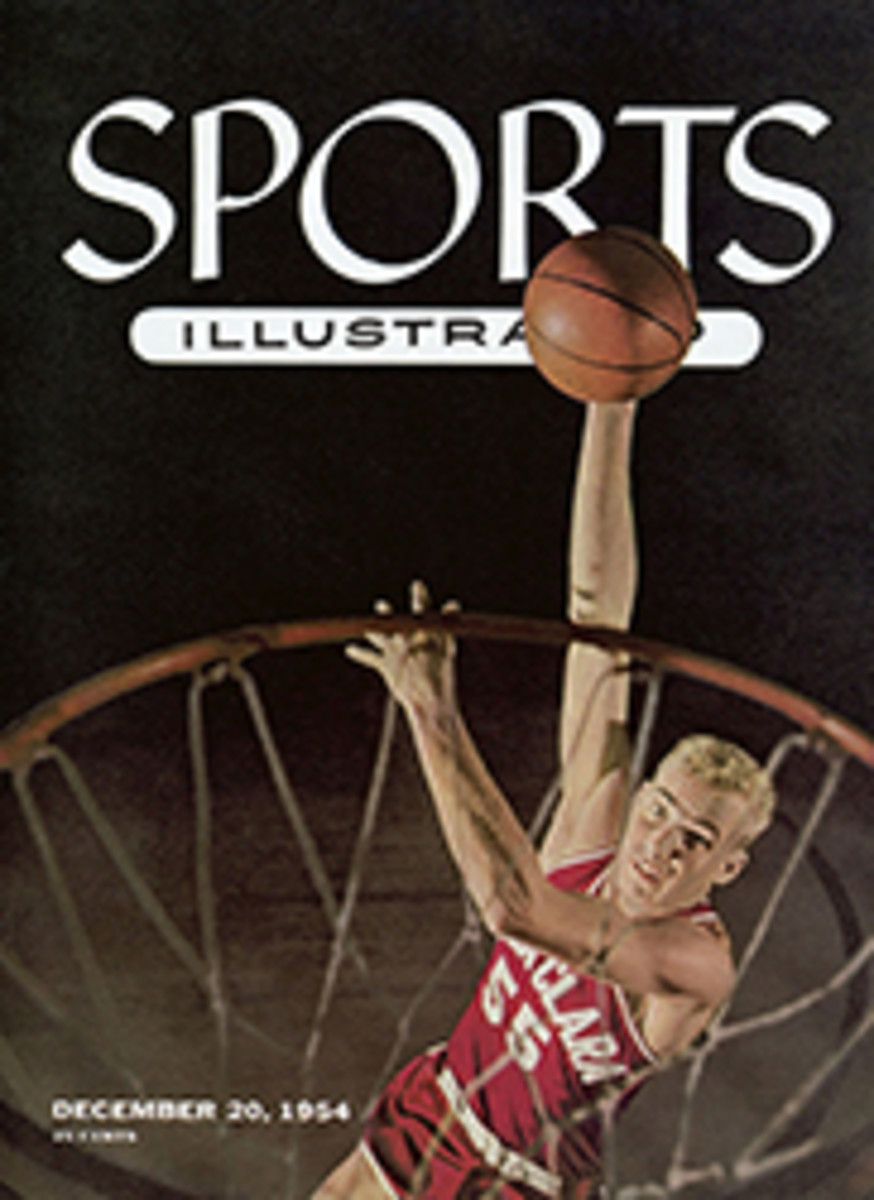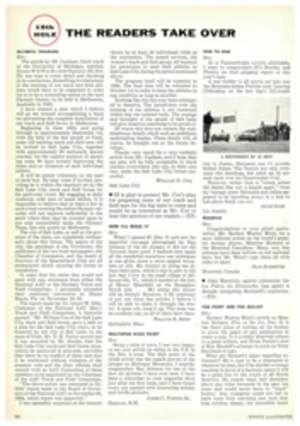
STRIKES, SPLITS AND SPARES
CHICAGO
Everyone from the producer and director of the television show to the pinboys had his fingers crossed a few weeks ago when Harold Peterson, a slight, blond bowler, rolled easygoing Stanley Weglarz for the Chicago Bowling Proprietors Association match game title and a $1,000 prize.
Peterson and Weglarz rank with the near-greats of the Classic League, but they are not of All-Star caliber. They had rolled well to reach the finals. Peterson averaged 205 and Weglarz 203. But this was in eliminations on their home lanes, with friends rooting them on. Now they were bowling for big money for the first time, on strange alleys before the DeMet Championship Bowling TV audience which is accustomed to watching the game's brightest stars each Saturday night.
NERVOUS AND WORRIED
Producer Matt Niesen nervously paced his Faetz-Niesen alleys, pausing occasionally behind lanes No. 5 and 6 to reassure the warming-up finalists they had nothing to be nervous about. Sponsor Peter DeMet watched the large television screen in the bar and worried aloud whether the test would prove too tough for them. WNBQ's Whispering Joe Wilson whispered over the microphone as the match started: "If these young men get the shakes at first, remember it's their first trial in the big time."
But the worrying was unnecessary. Nothing, in fact, was shaken except the pins. Peterson, a member of the George London Shirts quintet, behind by 21 pins after the opening game (he rolled 235 to Weglarz's 256), came through with a 681 series to win by 17 in as thrilling a match as has been staged all season. He got strikes in the ninth and final frames of the third game to assure victory, but his big break came in the sixth frame when he barely touched the "Brooklyn" side of the headpin and scrambled the pins for a third consecutive strike.
DeMet Championship Bowling (SI, Nov. 15) is by now the most popular sports program in Chicago. An official survey, released last week, showed that by mid-November it had a 16.8 rating (more than 700,000 viewers)—higher than collegiate or professional football or boxing. In Cleveland, Sam Levine's Bowler's Jackpot program (5-6 p.m., Sat.) was rated even with football on the day that Ohio State played Michigan. Did someone in the gallery say bowling is not a spectator sport?
As if the Peterson-Weglarz duel were not enough for one weekend, the city was treated to another great television match the following day. This was one of the Championship Bowling film series in which Steve Nagy of Cleveland scored a perfect 300 to edge out Ed Kowalics of Chicago. Popular "Big Steve," as his Hungarian followers call the 200-pound American Bowling Congress champion of 1952, hooked all 12 balls into the strike pocket but required luck's helping hand in the fifth frame. He came in slightly too high with that one, and the No. 4 and 6 pins rocked tantalizingly for a second before toppling.
Kowalics, incidentally, is Chicago's hottest bowler these days. He has rolled several 700 series and last month scored a sparkling 803 (268 average)—the highest series in five-man league competition until Ed Appelle rolled 258-268-279 (805) the other day in Detroit. Buzz Fazio, the colorful captain of the champion Stroh Beers (SI, Dec. 13), had an opportunity to register a record series on Nov. 29, when he started with 300-279 in the Cecil Ward Major Classic in Detroit, but he fell to 223—if you call 223 falling—to wind up with 802.
Speaking of perfect games, Mickey Mariani of Lodi, N.J. must have some sort of holiday record. Back on Election Day, 1950, he chalked up his first 300 at the Hackensack (N.J.) Recreation Center. Oct. 12, Columbus Day, he bowled the second 300 of his life, again at Hackensack. Three weeks later he came through with another perfect score on the same lanes. The date? Tuesday, Nov. 2, Election Day.
"HARD LUCK CHARLEY"
And Cleveland Attorney Charles Lausche, a star bowler for two decades, rolled the first 300 of his career only this season. Lausche, the brother of Ohio Governor Frank J. Lausche, has been known as "Hard Luck Charley" since 1939, when he competed against Lowell Jackson for the right to meet Ned Day for the U.S. championship. A 210-average bowler, Lausche needed only six pins on his spare and nine-all in the final (64th game) frame to win. Playing it "safe," he shot for the head-pin—and the ball cut through the middle of the triangle, leaving the nos. 4 and 7 pins on the left side of the lane and the Nos. 6, 9 and 10 on the right side. He failed to convert the spare and lost by four pins.
I was reminded of the incident while watching the Major League at Nagy's Twenty Grand lanes a few weeks ago. Wiry little Johnny Klares, another popular Cleveland proprietor, who with Nagy holds the all-time A.B.C. doubles record, left the same set-up, and several spectators—some too young to have been around alleys 15 years ago—shouted, "There's a Lausche split." Charles Lausche, it seems, is destined to be remembered for his failure long after the name of Jackson becomes an obscure footnote for bowling historians.
PHOTO
"BIG STEVE" NAGY
ILLUSTRATION
IT'S ILLEGAL:...in Idaho for any person to participate in a dog fight.

